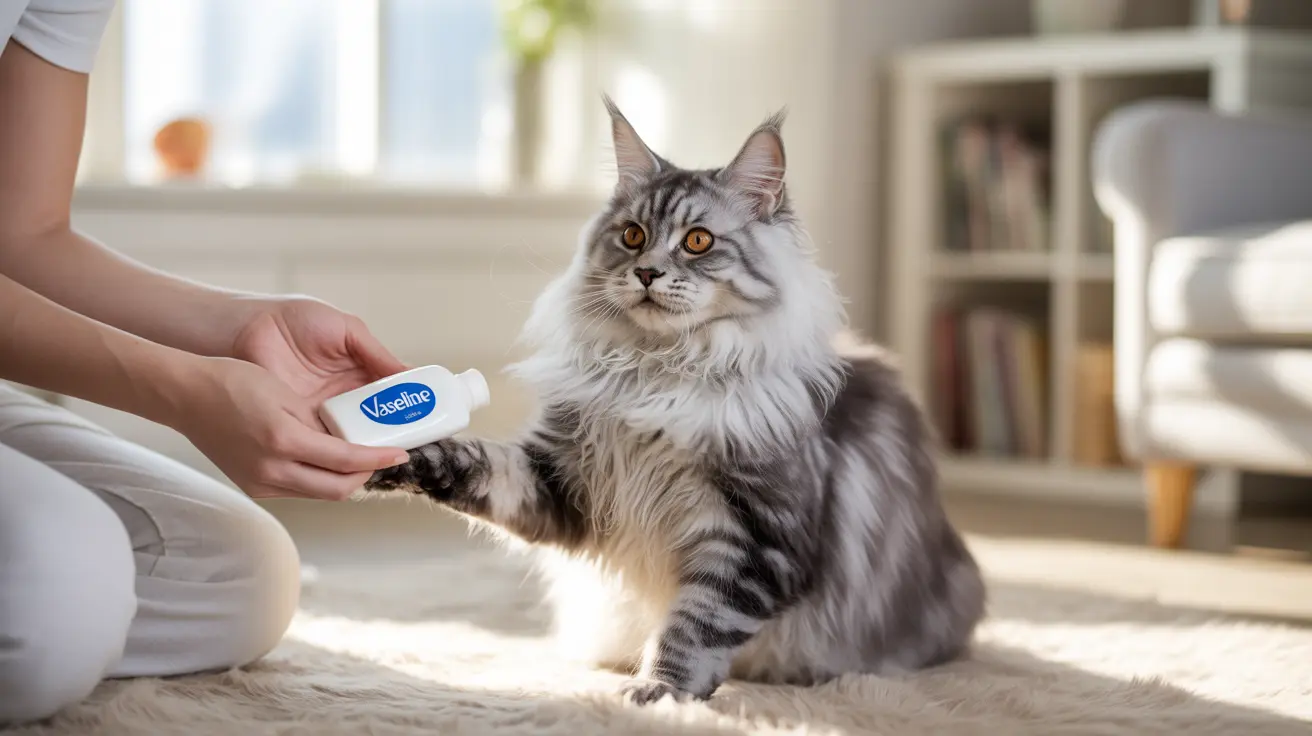Understanding Vaseline and Its Safety for Cats
Vaseline is made from pure petroleum jelly, consisting of mineral oils and waxes. This composition makes it safe for external application on cats, as it creates a protective moisture barrier similar to its function on human skin. The product is non-toxic, meaning that small amounts accidentally ingested through grooming typically won't cause serious health issues.
However, it's crucial to note that while Vaseline isn't harmful in small quantities, it provides no nutritional value and should never be intentionally fed to your cat. When using Vaseline, always opt for the original, unscented variety to avoid potentially harmful additives.
Proper Application Methods
Applying Vaseline to your cat's paws requires patience and proper technique. Here's how to do it effectively:
- Use a minimal amount - just enough to create a thin protective layer
- Apply gently, as cats are often sensitive about their paws
- Choose a calm moment when your cat is relaxed
- Consider using treats or positive reinforcement during application
- Have someone assist you by holding or distracting your cat
Monitoring Your Cat After Application
After applying Vaseline, watch your cat's behavior closely. Some cats may try to lick it off immediately, while others might leave it alone. If excessive licking becomes an issue, you may need to consider alternative treatments or use an e-collar temporarily.
When to Use Vaseline on Cat Paws
Vaseline can be particularly helpful in treating several common paw conditions:
- Dry, cracked paw pads from winter weather
- Minor cuts and abrasions
- Environmental irritation
- General maintenance during dry seasons
- Protection before exposure to harsh surfaces
Alternative Solutions for Paw Care
While Vaseline is generally safe, several alternatives might be more suitable for your cat:
- Specialized pet paw balms
- Natural coconut oil
- Commercial cat-specific moisturizers
- Protective booties for outdoor cats
- Humidifiers to prevent environmental dryness
Signs Your Cat Needs Paw Treatment
Watch for these indicators that your cat's paws need attention:
- Visible cracks or dryness
- Excessive licking of paws
- Limping or reluctance to walk
- Changes in normal activity levels
- Visible discomfort when walking
Frequently Asked Questions
Is it safe to put Vaseline on my cat's dry or cracked paws?
Yes, Vaseline is generally safe for external use on cat paws. However, use only a small amount and monitor your cat to ensure they're not excessively licking it off.
How much Vaseline can I apply on my cat's paws without causing harm?
Apply just enough to create a thin, barely visible layer on the paw pads. Using too much can lead to messy situations and excessive licking.
What should I do if my cat keeps licking off Vaseline after I apply it to their paws?
Consider using an e-collar temporarily, applying the Vaseline before bedtime, or switching to a pet-specific product that has a less appealing taste.
Are there better alternatives to Vaseline for moisturizing and protecting my cat's paw pads?
Yes, specialized pet paw balms, natural coconut oil, or veterinary-approved moisturizers might be more suitable alternatives, especially if your cat tends to lick their paws excessively.
When should I see a vet if my cat's paw pads are cracked or irritated despite home treatments?
Consult a veterinarian if you notice signs of infection, persistent cracking, bleeding, or if your cat shows significant discomfort despite home treatment for more than a few days.
Conclusion
While Vaseline can be a helpful tool for maintaining your cat's paw health, it's important to use it properly and be aware of alternatives. Always monitor your cat's response to treatment, and don't hesitate to consult with your veterinarian if paw problems persist or worsen.






